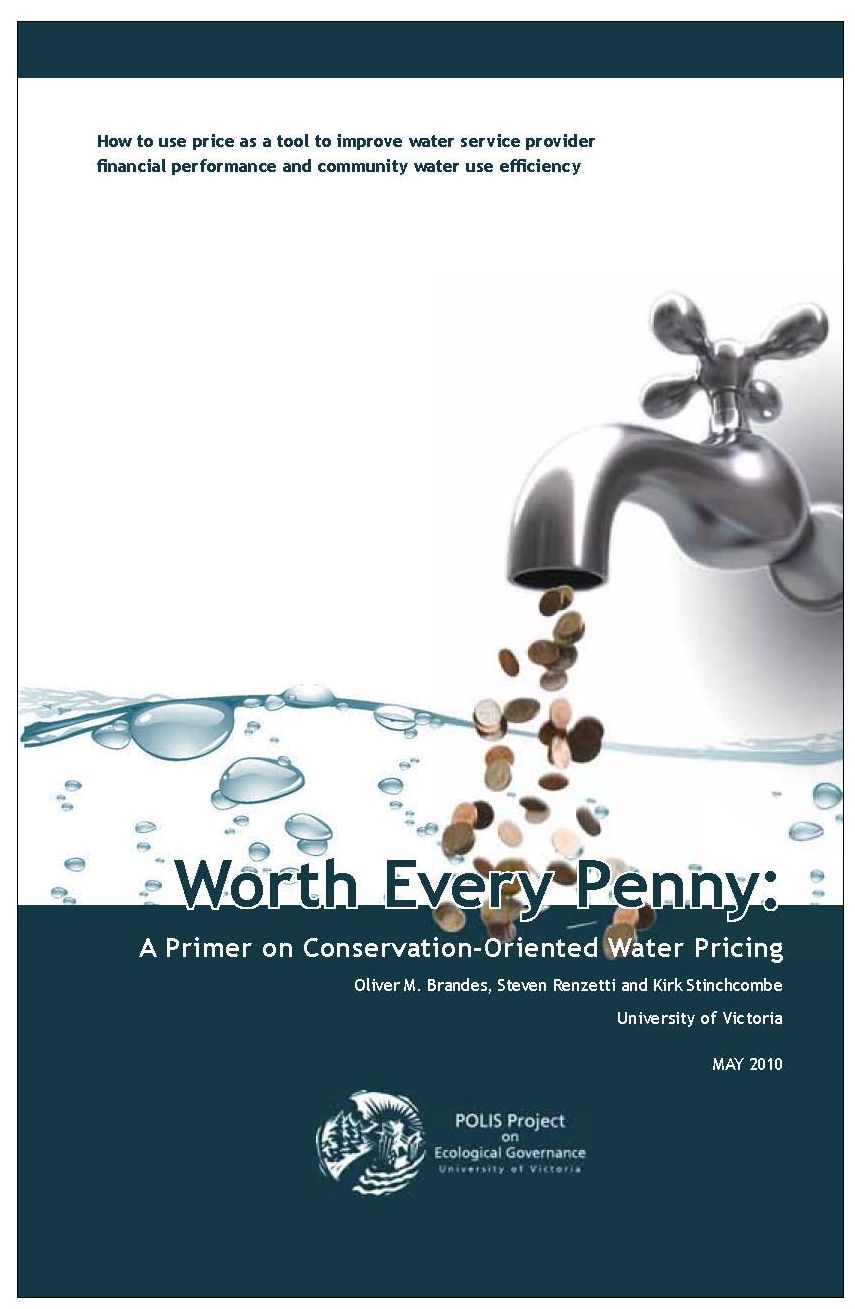WORTH EVERY PENNY: Regional District of Nanaimo will host workshop on ‘Conservation-Oriented Water Pricing’ in September 2010

First Announcement
The Regional District of Nanaimo (RDN) has announced that it will host a Water Pricing Workshop on September 9, 2010. The workshop is a collaborative effort with the POLIS Water Sustainability Project (University of Victoria) and CAVI-Convening for Action on Vancouver Island.
To Learn More:
To download a poster that is complete with pre-registration information, click on Preliminary Announcement for “Worth Every Penny: A Learning Lunch Workshop”
Water Pricing Primer
In May 2010, the University of Victoria’s POLIS Project on Ecological Governance published Worth Every Penny: A Primer on Conservation-Oriented Water Pricing.
 “The Primer will provide the core content for the Water Pricing Workshop,” states John Finnie, General Manager of Regional & Community Utilities with the RDN. He is also CAVI Chair. “The workshop creates a timely opportunity to connect the dots between the Primer, the RDN’s Action for Water, and Beyond the Guidebook 2010. The desired outcome for the workshop is that participating practitioners will understand why ‘conservation-oriented water pricing ‘ is a tool to achieve a larger end.”
“The Primer will provide the core content for the Water Pricing Workshop,” states John Finnie, General Manager of Regional & Community Utilities with the RDN. He is also CAVI Chair. “The workshop creates a timely opportunity to connect the dots between the Primer, the RDN’s Action for Water, and Beyond the Guidebook 2010. The desired outcome for the workshop is that participating practitioners will understand why ‘conservation-oriented water pricing ‘ is a tool to achieve a larger end.”
“During the July/August period, we will be releasing additional details about the workshop program design. We will be elaborating on each of the ‘dots’ and we will foreshadowing what we hope to accomplish in ‘town hall sharing and learning sessions’ that will focus on Vancouver Island experience.”
Conservation-Oriented Water Pricing
 “The primer provides an overview of conservation-oriented water pricing. It explains how it works, what are the benefits are, and how water utilities can implement and transition to this system over time. The primer also offers advice on how to address some implementation challenges,” explains Oliver Brandes, POLIS Associate Director and Water Sustainability Project Leader
“The primer provides an overview of conservation-oriented water pricing. It explains how it works, what are the benefits are, and how water utilities can implement and transition to this system over time. The primer also offers advice on how to address some implementation challenges,” explains Oliver Brandes, POLIS Associate Director and Water Sustainability Project Leader
“With little financial incentive to conserve, we over-consume, and our overconsumption is threatening water supplies, community water security and the sustainability of our water service infrastructure.”
The Need for Action
“Moving to effective water pricing will take time and probably a bit of courage on the part of municipal leaders. But we need to remember that it makes sound sense from both business and environmental points of view,” emphasizes Kirk Stinchcombe, Primer co-author. He is the featured faculty for the workshop.
 “Water infrastructure in many Canadian towns and cities is deteriorating, and water bills are often not high enough to even cover the costs of continuing operations. In fact, Statistics Canada figures show that the aggregate ratio of what municipal water service providers brought in (revenue) compared with what they spent (expenditure) in 2007 was only 70 per cent and is falling.”
“Water infrastructure in many Canadian towns and cities is deteriorating, and water bills are often not high enough to even cover the costs of continuing operations. In fact, Statistics Canada figures show that the aggregate ratio of what municipal water service providers brought in (revenue) compared with what they spent (expenditure) in 2007 was only 70 per cent and is falling.”
“In other words, water users are not even coming close to covering the full costs of the water services they enjoy — and it’s getting worse.”
“To cover the gap, occasionally a federal or provincial government, looking to score political points, doles out money under variously branded ‘green’ (or in this case ‘blue’) infrastructure programs. But this is a Band-Aid solution for a geyser of a problem. A better solution is to begin charging individuals and businesses what water really is worth, based on the volume they use,” concludes Kirk Stinchcombe.


